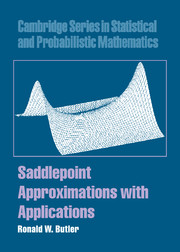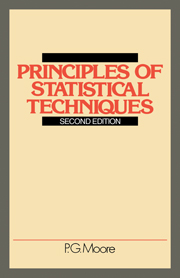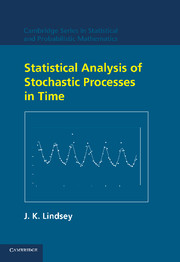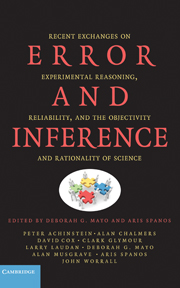Refine search
Actions for selected content:
2348 results in Statistical theory and methods
6 - Specification issues and generalized models
-
- Book:
- Modeling Ordered Choices
- Published online:
- 05 June 2012
- Print publication:
- 08 April 2010, pp 181-207
-
- Chapter
- Export citation
7 - Accommodating individual heterogeneity
-
- Book:
- Modeling Ordered Choices
- Published online:
- 05 June 2012
- Print publication:
- 08 April 2010, pp 208-238
-
- Chapter
- Export citation
11 - Two-part and sample selection models
-
- Book:
- Modeling Ordered Choices
- Published online:
- 05 June 2012
- Print publication:
- 08 April 2010, pp 302-319
-
- Chapter
- Export citation
List of figures
-
- Book:
- Modeling Ordered Choices
- Published online:
- 05 June 2012
- Print publication:
- 08 April 2010, pp xi-xii
-
- Chapter
- Export citation
Preface
-
- Book:
- Modeling Ordered Choices
- Published online:
- 05 June 2012
- Print publication:
- 08 April 2010, pp xiii-xvi
-
- Chapter
- Export citation
2 - Modeling binary choices
-
- Book:
- Modeling Ordered Choices
- Published online:
- 05 June 2012
- Print publication:
- 08 April 2010, pp 9-98
-
- Chapter
- Export citation
12 - Semiparametric and nonparametric estimators and analyses
-
- Book:
- Modeling Ordered Choices
- Published online:
- 05 June 2012
- Print publication:
- 08 April 2010, pp 320-336
-
- Chapter
- Export citation
8 - Parameter variation and a generalized model
-
- Book:
- Modeling Ordered Choices
- Published online:
- 05 June 2012
- Print publication:
- 08 April 2010, pp 239-267
-
- Chapter
- Export citation
Index
-
- Book:
- Modeling Ordered Choices
- Published online:
- 05 June 2012
- Print publication:
- 08 April 2010, pp 361-365
-
- Chapter
- Export citation
References
-
- Book:
- Modeling Ordered Choices
- Published online:
- 05 June 2012
- Print publication:
- 08 April 2010, pp 337-360
-
- Chapter
- Export citation
9 - Ordered choice modeling with panel and time series data
-
- Book:
- Modeling Ordered Choices
- Published online:
- 05 June 2012
- Print publication:
- 08 April 2010, pp 268-289
-
- Chapter
- Export citation
5 - Estimation, inference and analysis using the ordered choice model
-
- Book:
- Modeling Ordered Choices
- Published online:
- 05 June 2012
- Print publication:
- 08 April 2010, pp 136-180
-
- Chapter
- Export citation
4 - Antecedents and contemporary counterparts
-
- Book:
- Modeling Ordered Choices
- Published online:
- 05 June 2012
- Print publication:
- 08 April 2010, pp 111-135
-
- Chapter
- Export citation
3 - A model for ordered choices
-
- Book:
- Modeling Ordered Choices
- Published online:
- 05 June 2012
- Print publication:
- 08 April 2010, pp 99-110
-
- Chapter
- Export citation
10 - Bivariate and multivariate ordered choice models
-
- Book:
- Modeling Ordered Choices
- Published online:
- 05 June 2012
- Print publication:
- 08 April 2010, pp 290-301
-
- Chapter
- Export citation

Saddlepoint Approximations with Applications
-
- Published online:
- 25 February 2010
- Print publication:
- 16 August 2007

Principles of Statistical Techniques
- A First Course from the Beginnings, for Schools and Universities, with Many Examples and Solutions
-
- Published online:
- 03 February 2010
- Print publication:
- 02 July 1969

Statistical Analysis of Stochastic Processes in Time
-
- Published online:
- 03 February 2010
- Print publication:
- 02 August 2004

Error and Inference
- Recent Exchanges on Experimental Reasoning, Reliability, and the Objectivity and Rationality of Science
-
- Published online:
- 29 January 2010
- Print publication:
- 26 October 2009
14 - Survival Models
-
- Book:
- Regression Modeling with Actuarial and Financial Applications
- Published online:
- 05 June 2012
- Print publication:
- 30 November 2009, pp 383-398
-
- Chapter
- Export citation
